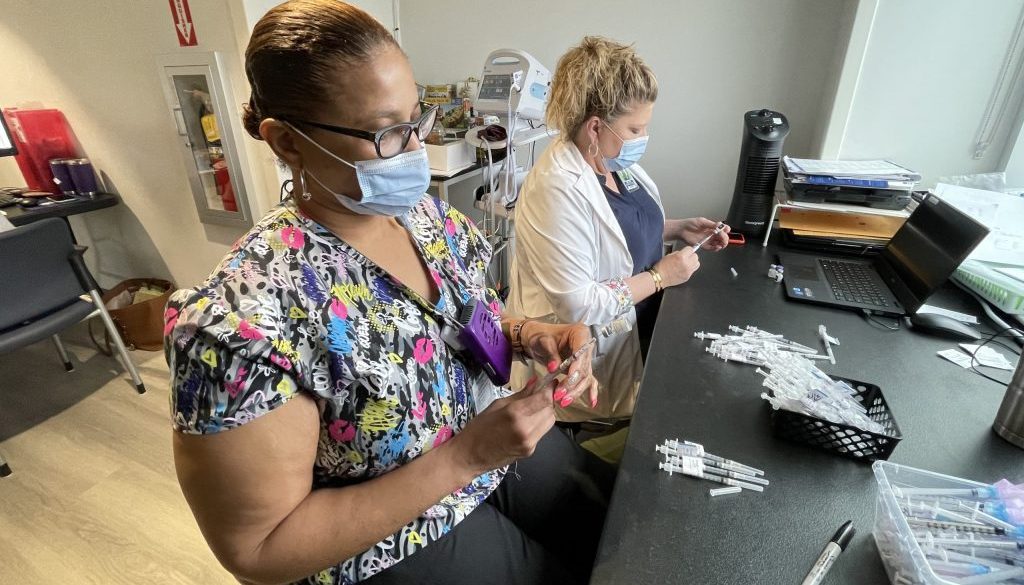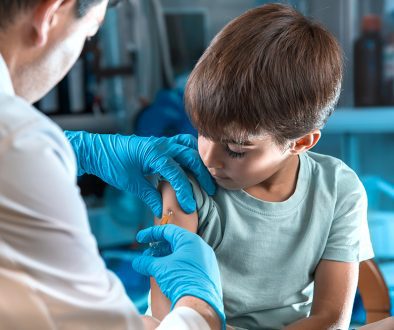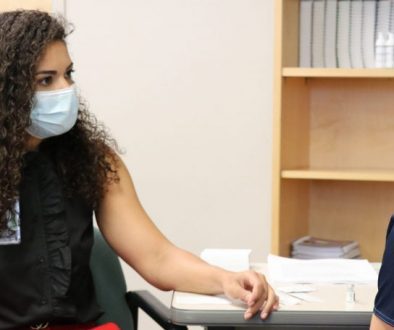COVID-19 One Year Later
At Conway Medical Center, March 17, 2020 changed everything. A patient was admitted that day, suspected of having COVID-19. Just a few days before, South Carolina had its first known case of this virus.
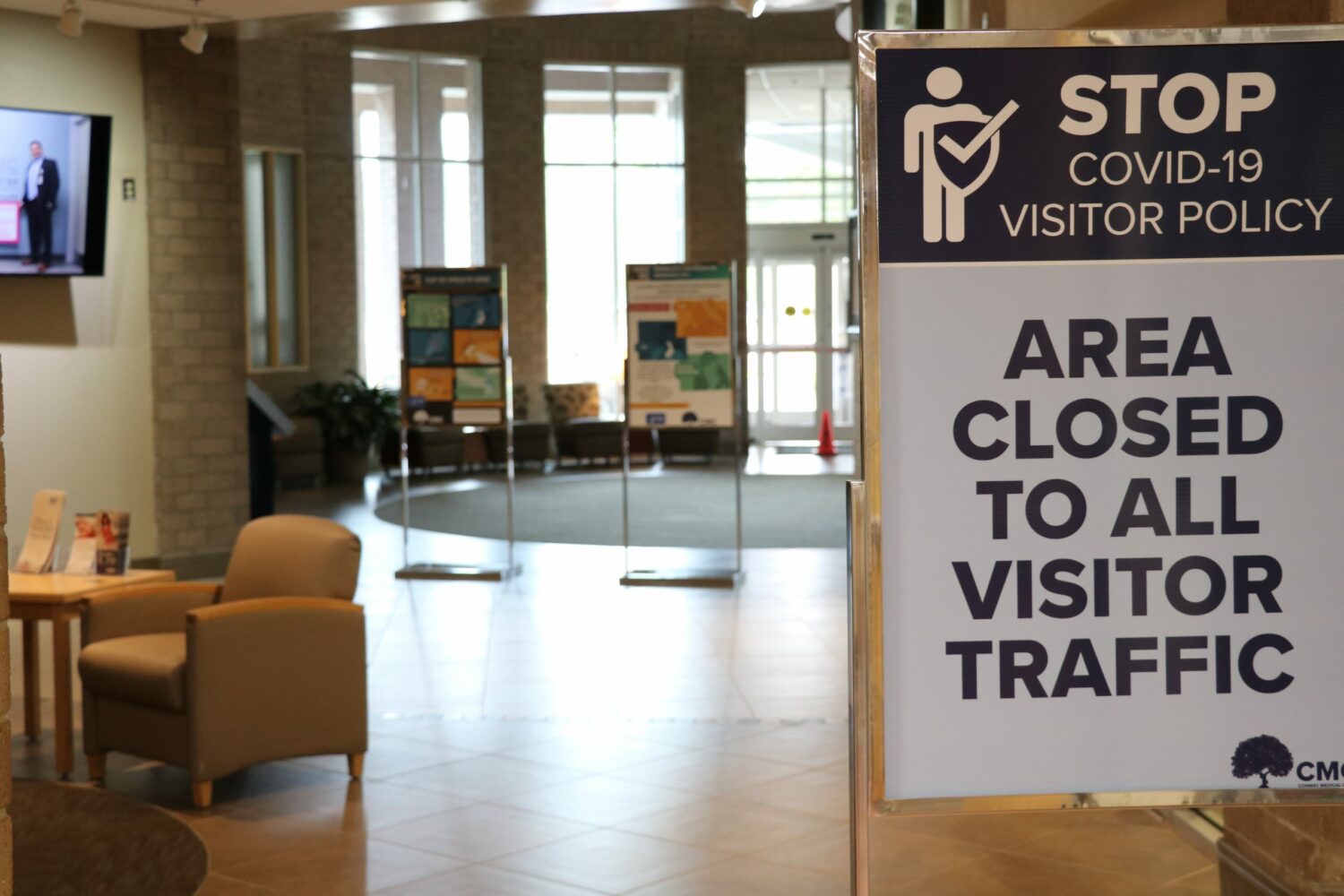
After months of preparation and learning, we soon found out that there was still so much more to learn.
“We’ve learned so much over this past year. It’s been crazy,” said Lindsay Stroud, CMC’s Infection Control Coordinator who has been on the frontlines of fighting this virus since the beginning.
Two days later, on March 19th, the test on that patient, who was already being treated in isolation, came back positive.
Our leadership team met daily, working to help CMC follow the ever-changing guidelines from the Centers for Disease Control and Prevention (CDC). When it came to testing, isolation, and personal protective equipment (PPE) the guidance changed daily.
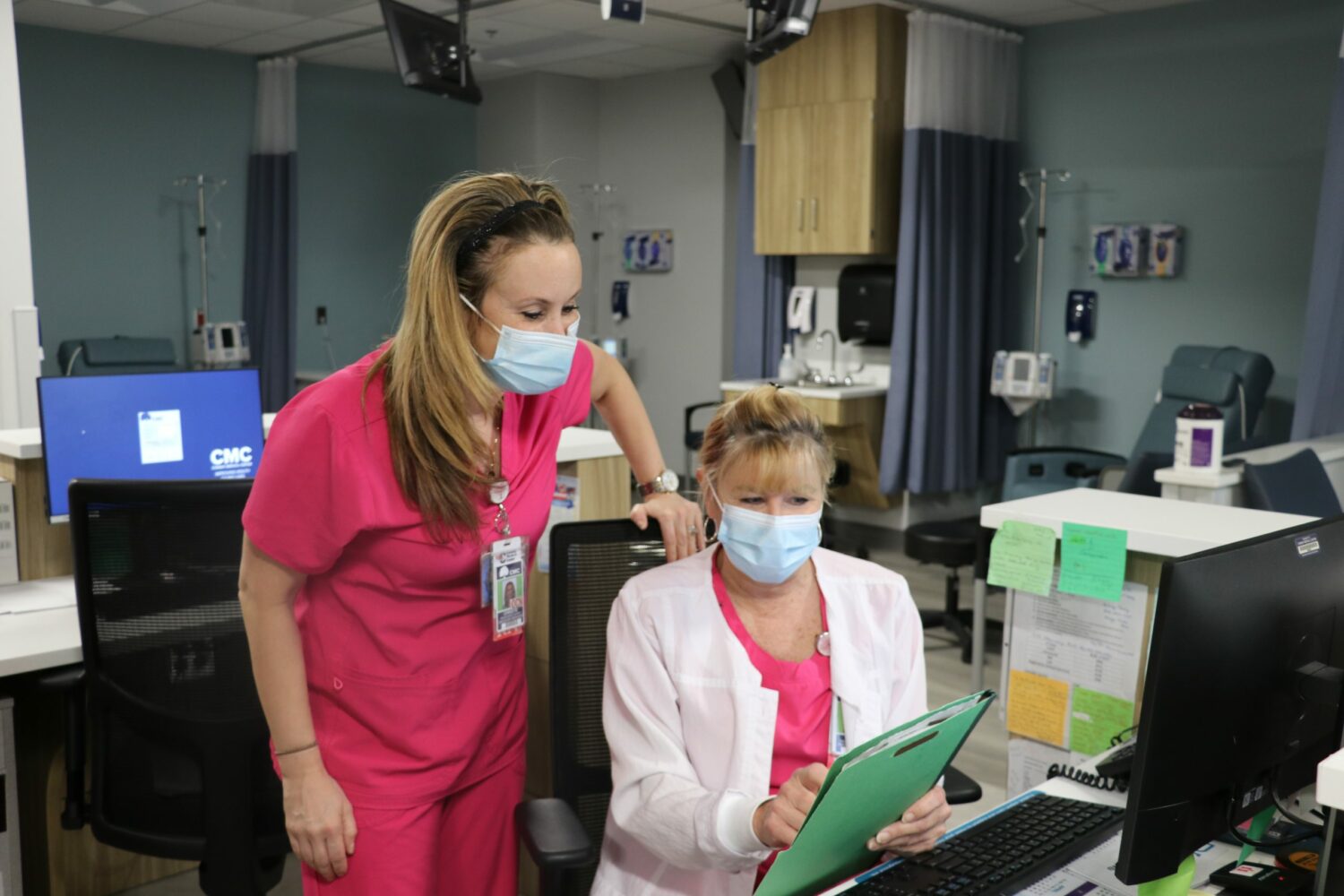
“In infection control, you want to provide the most accurate evidence-based guidelines available at all times to your frontline staff to protect them. I feel like at the beginning it was constantly changing, and I didn’t want them to lose trust in us,” said Stroud. “The CDC was learning more about how it was transmitted, and guidance changed sometimes day to day. Now we know universal masking and universal eye protection for our healthcare workers is best. We know COVID-19 is spread through your mucus membranes, your eyes, your nose, your mouth, so you want to protect your eyes, your nose, and your mouth.”
Finding PPE became more challenging in the early days of the pandemic. CMC’s Purchasing Department found outside vendors and suppliers, so what was a problem for many other hospitals in the country, was not a problem at CMC. This is just one example of departments throughout the hospital coming together at a very challenging and confusing time.
CMC’s Maintenance Department constructed entire halls of isolation chambers for COVID-19 patients. They also built intubation boxes for the Emergency Department that can be placed over patients with suspected COVID-19 to prevent transmission when they are intubated. Nurses from our physicians’ offices were brought in to work in the main hospital.
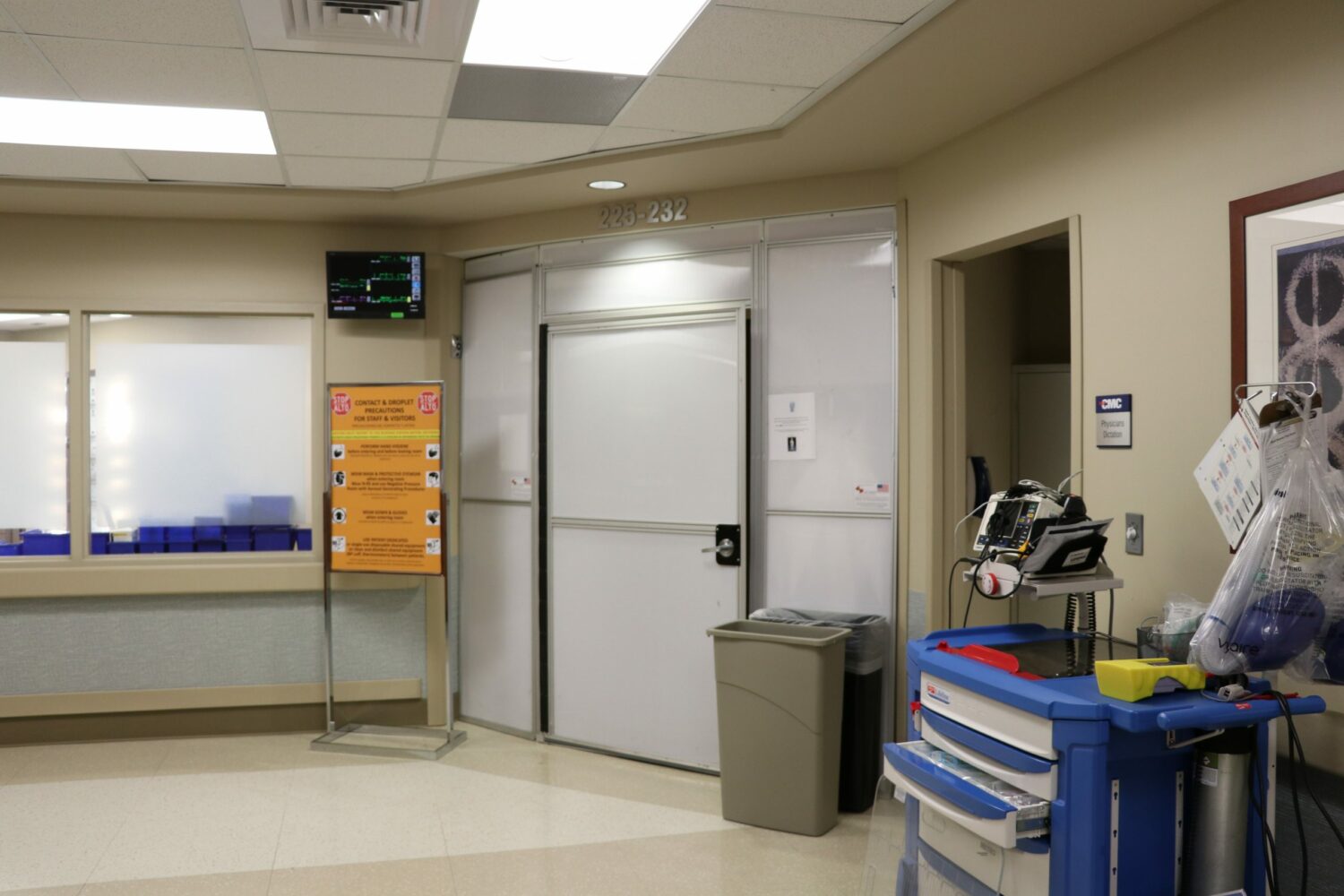
“What we’ve done as an organization to care for our community has been exceptional. The way that we’ve all pulled together from the physicians’ offices side to the hospital side, to just come together to take care of our staff and our patients the way we have, has just been great,” said Stroud.
So much has changed in the last year. Testing is now so much easier for patients.
“For some of these patients, it was taking two weeks to get their test results back for people who were not hospitalized,” Stroud explained. “Their quarantine period would be over by the time we called them with their results. That’s how bad it was the first six weeks or so.” Those tests no longer have to be sent out. Results are available within minutes.
Changes soon came throughout the hospital.
As guidance changed from the CDC, CMC soon went to a universal masking policy. Everyone on our main campus, as well as all CMC clinic locations, employees, patients, and visitors alike, must wear a mask at all times.
Large tents went up outside the Emergency Department to be used for triage, testing, and treatment. The main entrance to the hospital was closed. Those doors were locked, so visitors and employees could only enter the building through a few entrances that included screenings for temperature, questions about travel and possible exposure, and health questions. A couple of times over the past year, when the COVID-19 case rates were extremely high, the hospital had to restrict visitors.
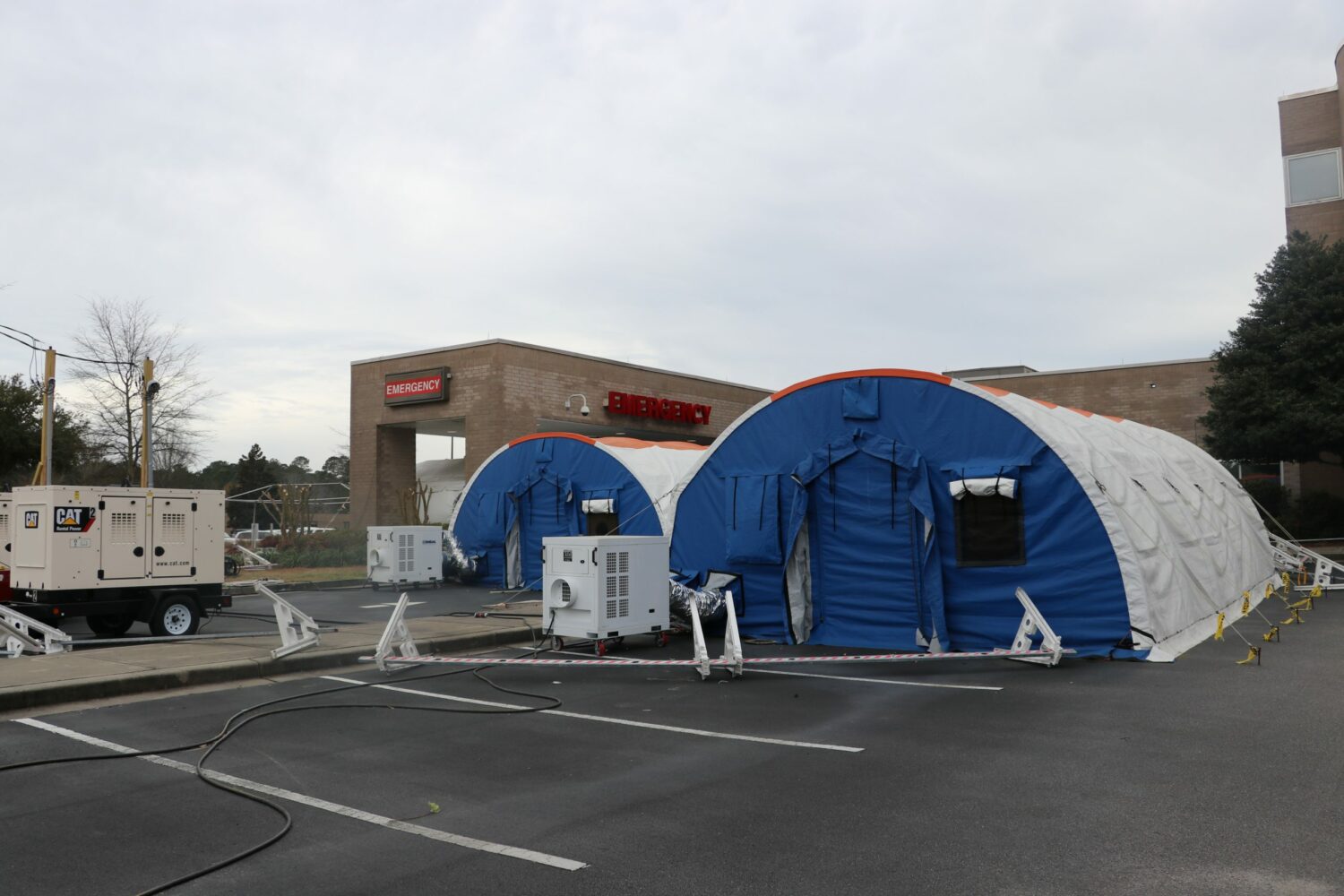
“You think about how we locked down all accesses. We haven’t had our front door open in a year. The front of our hospital has been shut down and hasn’t been open in a year. We opened only certain accesses and began screening everyone who came to work. That is unreal to me. I never thought that would ever happen. We’ve gone from not having visitation to easing into allowing one visitor per patient, and we still are limiting. All that journey with the visitation, that’s hard. We’re a community hospital and we are used to having people come in and visiting their families and loved ones. It’s just unreal,” said Stroud.
She says she never could have even imagined how the last year has gone. It has certainly had its ups and downs.
“Looking at our COVID-19 rates and hospitalizations, we thought June was bad, then July and August came. Then December and January came and those spikes that we’ve had over this past year have been bad. I never would have thought in a million years we would have had to do some of the things we’ve had to do.”
Unfortunately, those illnesses have come with losses as well. Staff members have used technology to keep these patients in touch with their loved ones who cannot visit and are there for them until the end.
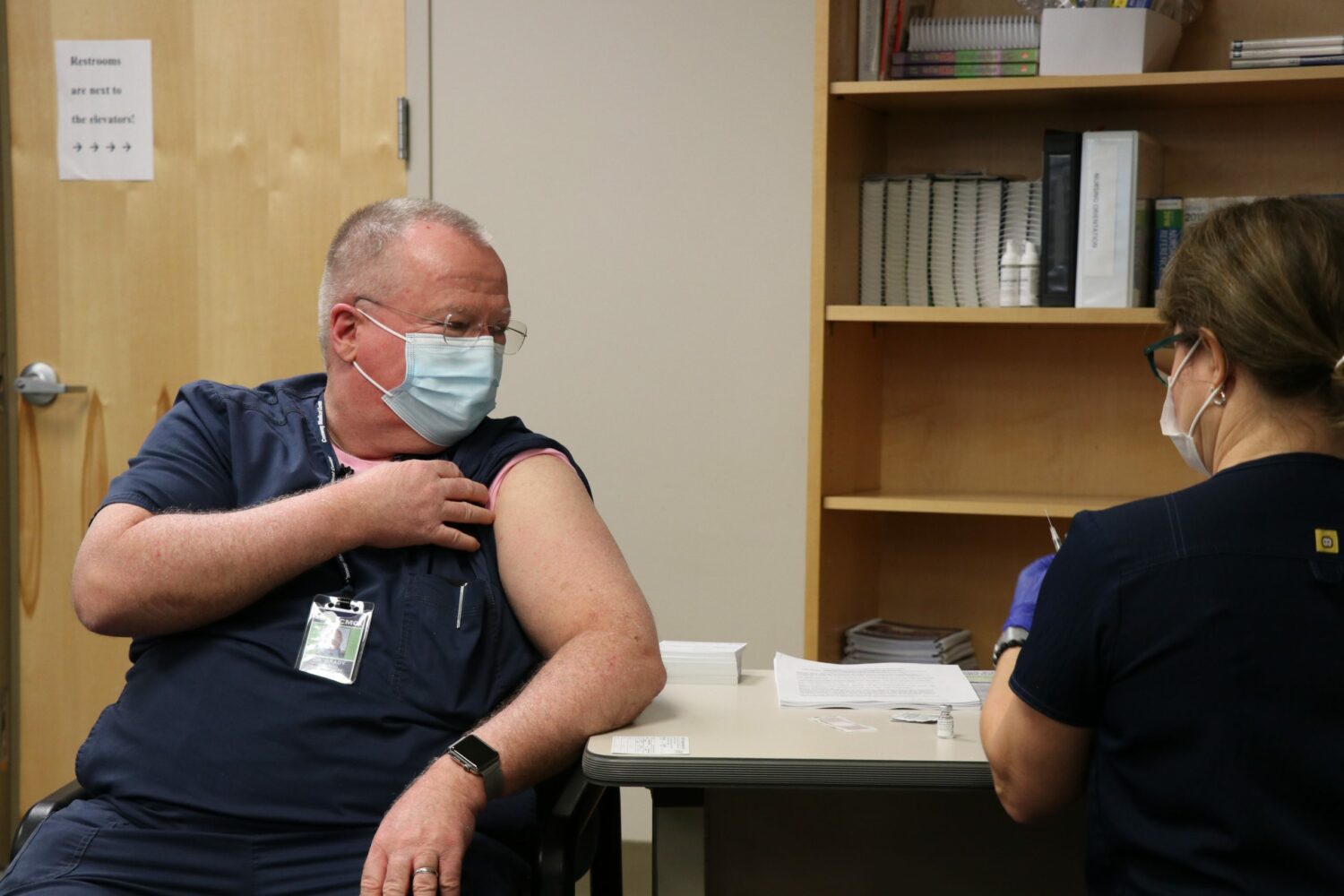
Still, with everything we have experienced in this journey, hope is on the horizon.
December 14, 2020 – Almost nine months since the first COVID-19 positive case at CMC, Dr. Stephen Brady, CMC Director of Cardiology, became the first person in the state of South Carolina to receive a COVID-19 vaccine. In three months, CMC has administered more than 30,000 doses of the Pfizer vaccine.
“I think with the vaccinations coming out, we are getting some herd immunity. We’ve seen a decrease in hospitalizations. We’ve seen a decrease in overall outpatient COVID numbers now, our percent positivity rate has gone down, which is good,” Stroud explained.

We also have new treatments, including the outpatient monoclonal antibody infusions for patients not in the hospital to help prevent them from becoming extremely sick. We also have more treatment options for those who are hospitalized with COVID-19.
“There’s been a lot of science put forward to help these patients now than we had a year ago or we had six months ago,” said Stroud. “Hopefully as we learn more about COVID maybe there will be more advances that can help patients on the hospitalized side, especially who are on ventilators and extremely ill.”
Despite those advances, Stroud stresses the need to continue to practice basic daily infection control practices: wash your hands, stay home when you’re sick, wear a mask, and practice social distancing.
Looking back over the past year, we have mourned the losses while celebrating the victories.
The first COVID-19 positive patient at CMC was released after 13 days on March 30th.
“When it first hit, we thought, eight weeks we will stay home and everything can get back to normal,” Stroud said. “Now it’s a year later, and while we are edging closer to that, things are so very different. It’s been a long journey, but we’ve learned along the way – how to make our hospital safe and our community safe.”

